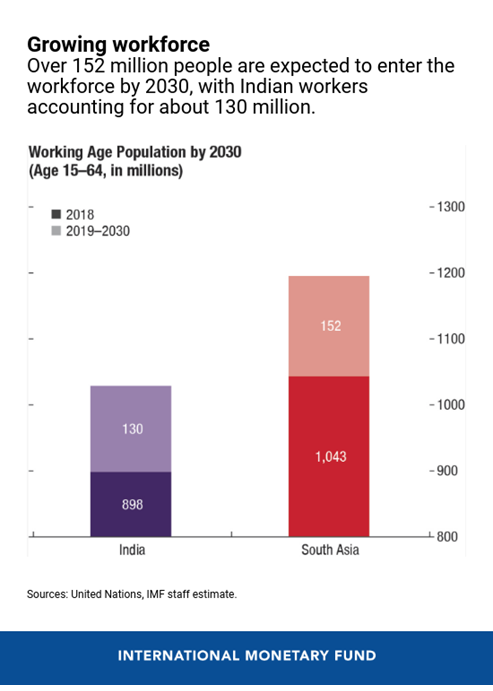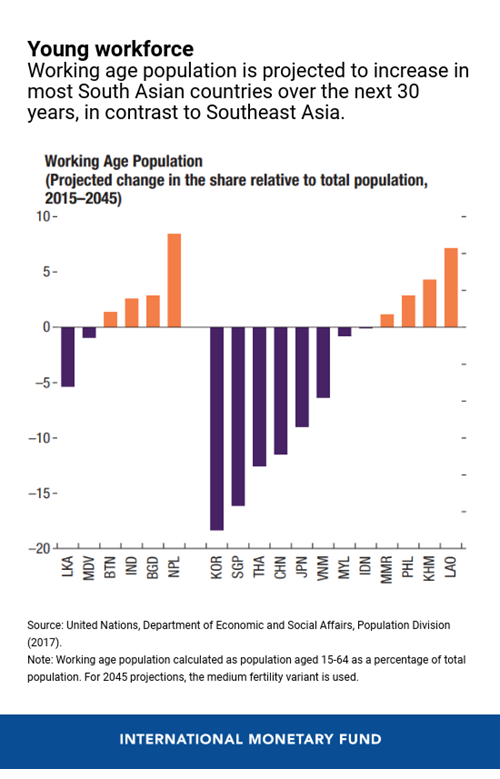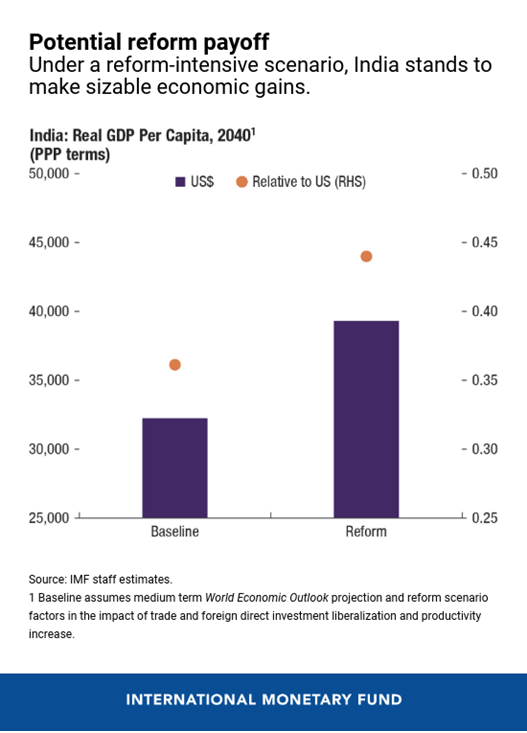
Team of Indian university students doing group study. A large and young workforce will help strengthen South Asian economies. (photo: Deepak Sethi/Getty Images by iStock)
Building on South Asia's Economic Success
November 4, 2019
South Asia is poised to play a key role in the global economy, building on the steady economic progress and reform process over the last few decades. Despite the recent global economic slowdown, India remains among the fastest-growing large economies, and South Asia’s contribution to global growth is set to increase, while those of more mature economies around the world decelerate.
Related Links
With a population that has a median age under 27, South Asia is the youngest region in Asia. Based on demographic trends, more than 150 million people in the region are expected to enter the labor market by 2030. A large and young workforce can be South Asia’s strength, if supported by a high-quality and job-rich growth strategy that leverages all sectors of the economy in a balanced way. While policy recommendations remain country-specific, a new IMF paper recommends they focus on the following:
-
Further progress in increasing revenues and reducing fiscal deficits;
-
Greater trade and foreign direct investment liberalization; and
-
Investment in people.
Under a scenario that includes more ambitious liberalization of trade and foreign direct investment, stepped-up efforts to improve infrastructure, and the successful harnessing of South Asia’s workforce, the region could account for about one-third of global growth by 2040. This is 5 percentage points higher than the expected contribution under a baseline scenario based on current, ongoing policies and demographic trends.

Under the scenario where more ambitious reforms move ahead, real GDP growth in South Asia would surpass 6.5 percent, on average, over the long-term, compared to about 6 percent under the baseline scenario. In a downside scenario, where job-rich growth fails to be delivered to the growing workforce, real GDP growth would be just 5 percent.
The reform efforts, most importantly, would bring substantial improvement in per capita income and living standards in South Asia. For India alone, real GDP could be boosted by 20 percent and per capita income to about 50 percent of that in the United States by 2040, with important spillovers to the region through trade linkages and productivity gains from technology transfers.










